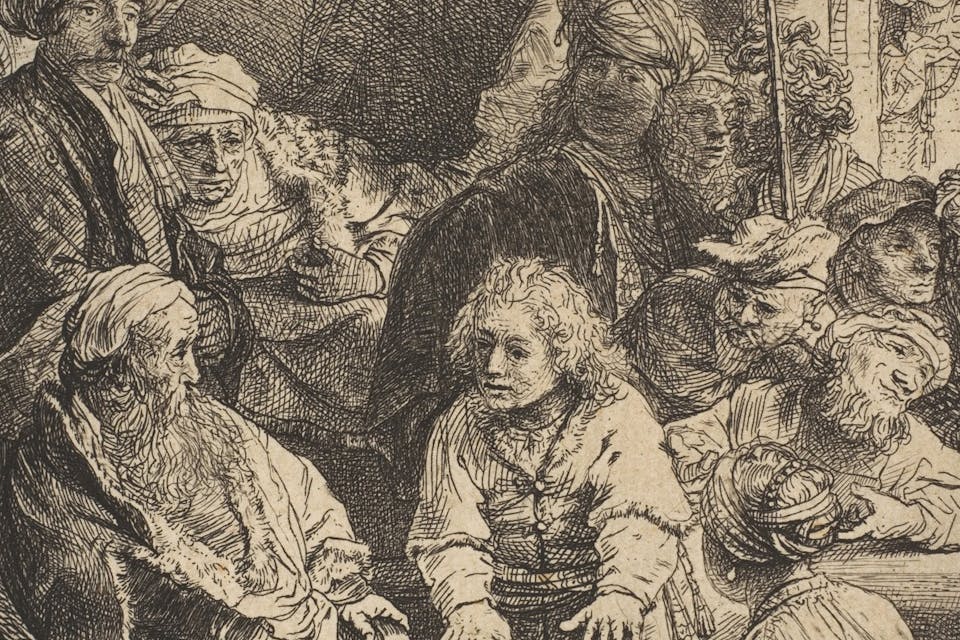
December 7, 2017
The Ultimate Portrayal of the Ultimate Example of the Unhappy Family
What Rembrandt's etching of Joseph and his family shows us about Judaism, and mankind.
This is the second in an occasional series of essays by Rabbi Meir Soloveichik on the intersection of Jews and Judaism with the artistic practice, and the aesthetic vision, of the great 17th-century Dutch master Rembrandt van Rijn. To read the introductory installment, click here.
“Happy families are all alike; every unhappy family is unhappy in its own way.” Tolstoy’s line, one of the most famous in world literature, is at least partially untrue: happy families are certainly not all alike. But yes, every family in turmoil is definitely unhappy in its own way—an adage worth keeping in mind when contemplating a 1638 etching by Rembrandt van Rijn. The etching depicts what, for Jews, may be the ultimate example of the unhappy family: that of Jacob and his twelve sons.
Rembrandt gives us here the opening scene of Vayeshev, this week’s Torah reading. In it, Joseph is relating another of his dreams to his (radically unhappy) father and brothers: